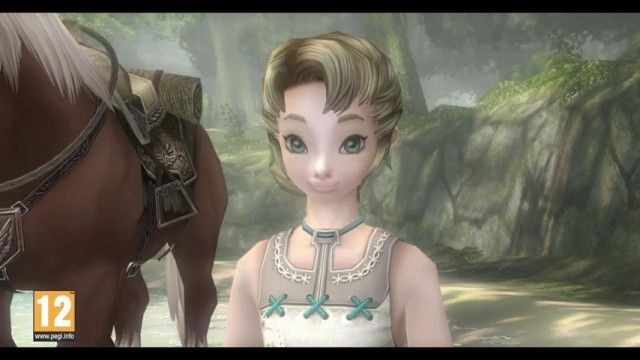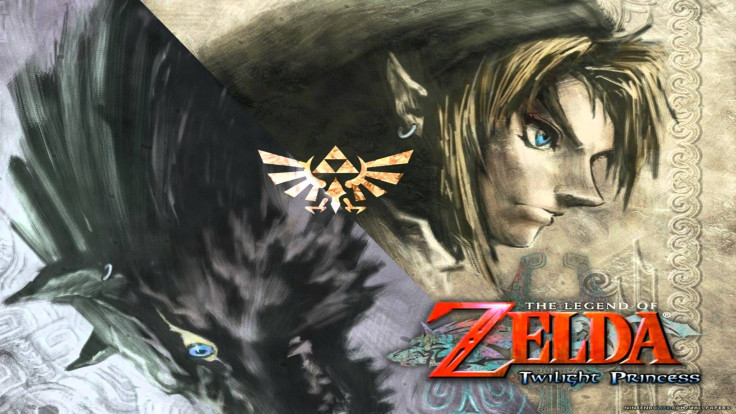Twilight Princess has a bit of a bad reputation. If Twilight Princess HD—out for Wii U on March 4—has a purpose, it’s to restore the game’s good name. Because the reputation of Twilight Princess is largely ill-deserved. It is the black sheep of the 3D Zelda games, but it absolutely doesn’t deserve to be. And the new polished version streamlines the game significantly, but even more than that, it reminds us that Twilight Princess is better than we remembered in the first place.
Why Twilight Princess Was Forgotten
Legend of Zelda: Twilight Princess came out in November 2006 to exceptionally high expectations. The game had been delayed for over a year, and instead of being a GameCube exclusive became a launch title for the Wii, with a GameCube release alongside it. And, because of the exceptional early success of the Wii, Twilight Princess became the best-selling Zelda game ever. It came out to solid reviews, and was much praised for its realistic graphics, great dungeons, and general throwbackness to Ocarina of Time. It’s still got a 95 on Metacritic after all these years.
But the game was a product of its times, and it isn’t talked abut nearly as much anymore. The game was a product of its times. Wind Waker, much aligned at release for its “Celda” graphics, has since achieved near-universal acclaim. Twilight Princess on the other hand is remembered as being too much like Ocarina, and less original. It’s the “dark” Zelda, a product of the mid-aughts, the grimdark era of Batman Begins and The Dark Knight and dark, serious, gothy themes all around. Even Zelda didn’t escape the trend. Now, looking back from the brightly lit and colorful aesthetic of the present day, it all looks muddy and unpleasant—and filled with motion controls, which are passé in this day and age.
But it’s time for a reconciliation.

Twilight Princess HD Restores The Game To Greatness
Twilight Princess HD brings the much-maligned but most successful Zelda game back to the modern day. First, let’s talk about the controls: the waggle is gone. No longer can you swing the Wii Remote to swing your sword. Twilight Princess HD is based on the GameCube version of the game: The world is restored to its original orientation instead of being flipped left to right, and it has more traditional controls. You can play on the GamePad or a Wii U Pro controller—both work fine, and the GamePad has some gyroscopic motion controls. I actually miss the waggle every once in a while, but in general, playing with buttons is a superior experience. The GamePad’s easy inventory management is a big plus, and goes a long way toward streamlining the overall experience.
Gameplay-wise, Twilight Princess starts slowly. The initial sequence in Ordon Village and the Faron Woods lasts for about two hours, and the first hour involves a lot of herding goats and running simple quests in the village. It’s the first Zelda game to have a really slow start; it’s not quite as bad as Skyward Sword, but it’s still a good long time before you get to the action. Eventually, you’re thrown into wolf form, which gets the game going. Midna is better and more entertaining than I remember. Wolf form, in case you also didn’t remember, is surprisingly robust, with a full suite of attacks and moves. It’s a lot of fun on its own. And that’s a good thing, because it’s a while before you get back to being normal, adult Link. Side note: If you’re playing on Hero Mode, wolf form is the hardest part of the early game, since you can’t use bottles to heal, and there are no heart drops.
The game’s streamlining efforts are visible early on, and don’t just involve the interface. Twilight Princess tasks you several times with filling a Vessel of Light with lost light essence by finding, killing and collecting bugs over a wide area covered in twilight. It’s a fetch quest in wolf form, and the Wii U version requires you to collect noticeably fewer bugs than the last time around. It’s a nice little nod to one of the less fun aspects of the game, and certainly helps to speed things along.
Once the slow start is over, Twilight Princess HD breezes along nicely. The game still has the same greatest strength and greatest weakness. The dungeons are incredible—some of the best in any Zelda game. Arbiter’s Grounds, the Temple of Time and Snowpeak Ruins are particularly impressive, but Twilight Princess has a great slew of dungeons overall. They’re a lot of them, and they’re real solid. The game firmly avoids the Wind Waker problem of having too few dungeons. On the flip side, the overworld is huge—and almost entirely empty. That hasn’t changed in Twilight Princess HD. It’s an open world game with little to actually explore. Hyrule Field just doesn’t have that much stuff in it. The dungeons more than make up for it… but don’t look too hard for cool things in the overworld.

Twilight Princess has other great things going for it, too. It’s got unique and inventive items, breaking free of the common Zelda trap of repeating just the same classics. Twilight Princess adds a bunch of cool new ones to the mix, but I won’t spoil them for you.Combat is a blast, although too easy on normal mode. Fighting flows very nicely, and mounted combat—although sometimes frustrating—is a lot of fun. The new Amiibo support helps in a pinch, especially if you’re in Hero Mode. Hero Mode itself is a welcome addition and does make the game substantially harder, although not entirely in the way I’d like—enemies do double damage and no hearts drop. The former is fine; the latter makes the game an exercise in health management more than anything else. I’d rather have some hearts drop, but take even more damage from enemies, a la Link Between Worlds. Thankfully, the Ganondorf Amiibo basically unlocks such a mode, although only until you die.
Honestly, gameplay-wise, Twilight Princess is pretty similar to Wind Waker, but with realistic graphics. It’s the same engine with a different look, after all. And that’s a good thing—Wind Waker HD was great. Twilight Princess is more of the same, but with more and better dungeons, new items, and a somewhat empty overworld that at least you can ride around in. The game’s settings aren’t as memorable as in Ocarina, but revisiting old landmarks from Ocarina centuries(?) later can be poignant. The world is filled with throwbacks to Ocarina, and it’s more obvious now that the map has been restored to its original orientation.

Let’s talk about the graphics in Twilight Princess HD. I’ll be straight with you: It doesn’t look all that great. Yeah, it looks better than the Wii version. But Twilight Princess HD doesn’t hold up nearly as well as Wind Waker HD, whose cel-shaded graphics look just as gorgeous in the modern day as they did a dozen years ago. Twilight Princess had realistic graphics at the time, but the graphics of 2006—even reskinned, with new textures over the old models—don’t look great today. This isn’t Final Fantasy 7 Remake, a full ground-up re-creation of the game. Twilight Princess HD does look a lot better than the original, but it doesn’t have the graphics of a modern game. It’s not supposed to. The graphics are clear, shiny, and unmuddled. But the models still come from an older era. It’s a new coat of paint.
Still, that’s enough. Twilight Princess HD is without question a better version of the original Twilight Princess. It is streamlined, harder if you want it to be, and definitely prettier. But its real goal seems like something more: Not to bring back a beloved favorite, like Wind Waker HD did, but to present a somewhat neglected and forgotten game in a new light. And Twilight Princess, despite the slow start, benefits from a second look. The dungeons alone justify the cost of entry. If you wrote off this game as the black sheep of the Zelda family years ago, it’s time to look again.

















